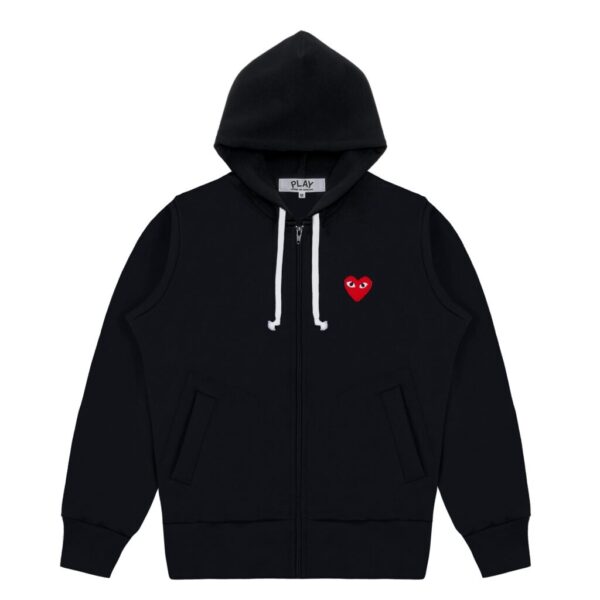From its inception in Tokyo in the late 1960s to its present-day status as a global fashion powerhouse, Rei Kawakubo’s Comme des Garçons has continually pushed the boundaries of clothing, aesthetics, and identity. By subverting traditional notions of beauty and challenging established norms, the label pioneered a radical approach to dressing that has Comme Des Garcons transformed how we think about gender in fashion. This blog explores the visionary strategies, key collections, and enduring influence of Comme des Garçons in redefining gendered design.
The Origins of an Avant-Garde Vision
When Rei Kawakubo launched Comme des Garçons in 1969, the fashion landscape was dominated by sharply tailored silhouettes and clear distinctions between men’s and women’s wear. Kawakubo, however, was uninterested in fitting her designs into these rigid categories. From her earliest runway presentations, she introduced deconstructed shapes, asymmetric cuts, and monochromatic palettes that blurred the lines of convention. By removing overt markers of femininity—cinched waists, high heels, and floral prints—she offered an alternative vocabulary in which garments spoke to the fluidity of the human form rather than to an assigned gender.
Deconstruction as Political Statement
Central to the label’s philosophy was the concept of deconstruction. Rather than hiding seams and finishes, Kawakubo exposed them, inviting wearers and observers to question the very fabric of fashion. This methodology reached a crescendo in her celebrated Autumn/Winter 1981–82 collection, known colloquially as “Destroy.” Models walked the runway in shredded tweed jackets, frayed trousers, and raw-edge cardigans that looked as if they had been torn apart and reassembled. In doing so, Comme des Garçons presented clothing as a mutable canvas, one capable of expressing dissonance, vulnerability, and resilience. By rejecting the polished ideal, Kawakubo implicitly critiqued the restrictive expectations placed on both men’s and women’s bodies.
Blurring the Binary Through Shape and Texture
Throughout the 1990s and early 2000s, Kawakubo continued to explore the interplay of shape and texture as tools for destabilizing gender norms. Oversized cocoon coats draped over slender frames, while sculptural padded dresses created silhouettes that defied easy classification. Fabrics were layered in unexpected ways, combining industrial nylon with delicate organza, or pairing heavy knits with sheer silks. These juxtapositions forced the eye to reconsider what it meant for a piece to appear “masculine” or “feminine.” A single Comme des Garçons garment could suggest strength and fragility, structure and fluidity, thereby inviting the wearer to inhabit multiple expressions of self.
Collaborations That Amplified the Message
As the brand grew, collaborations with artists and designers further expanded its reach and resonance. Partnering with figures like Junya Watanabe, Tao Kurihara, and Noir Kei Ninomiya, Kawakubo fostered environments in which gender play could be explored even more radically. Each diffusion line approached material, color, and form from a distinct perspective, yet all shared the parent label’s insistence on fluidity. Collaborations with eyewear brands, footwear manufacturers, and even contemporary artists translated the core ethos of non-binary design into everyday accessories, making the challenge to traditional gender codes tangible in multiple aspects of dress.
Impact on Runways and Retail
In the 2010s, major fashion houses and emerging designers alike began to acknowledge the shifting terrain of gendered fashion. The once-radical elements championed by Comme des Garçons—oversized tailoring, unisex collections, and androgynous styling—became staple offerings across the industry. Retailers devoted floors to gender-neutral lines, and magazines featured editorials in which models were styled without reliance on gender archetypes. These changes, while influenced by broader social movements, can be traced back in large part to Kawakubo’s fearless experiments. By demonstrating that individuality and creativity could thrive outside the binary, Comme des Garçons laid the groundwork for a more inclusive market.
Beyond Clothing: A Cultural Revolution
The ramifications of Comme des Garçons extend far beyond fabric and stitch. Kawakubo’s work has inspired dialogues in art, music, and performance, celebrating bodies of all shapes and identities. Exhibitions in museums around the world have examined her impact on contemporary culture, highlighting how fragile textiles, dramatic silhouettes, and Comme Des Garcons Converse asymmetrical forms can challenge societal norms. In universities and think tanks, her approach is studied as a form of activism, revealing how design choices resonate in everyday life and social structures.
A Legacy of Endless Possibility
Today, Comme des Garçons stands as both a symbol and a catalyst of change. Its runway shows remain unpredictable spectacles, its boutiques continue to surprise with conceptual installations, and its designs inspire new generations of creators to see clothing as a site of possibility. By redefining gender in fashion, Rei Kawakubo has shown that garments are more than adornment; they are instruments of self-expression, agents of social critique, and vehicles for reimagining the boundaries of identity. In an era where conversations about gender are more vital than ever, Comme des Garçons reminds us that the most profound revolutions often begin with the clothes we choose to wear.
- Comme Des Garcons - Official CDG Play Store | Up To 45% Off
- Comme Des Garcons Play Official Store is the best choice for your wardrobe, Get Amazing CDG Hoodie, Shirts, Jackets, at 45% Off, Fast Shipping Worldwide.
- fashion
Related posts:
 Online Kundali: Generate Free & Accurate Kundali just in Minutes
Online Kundali: Generate Free & Accurate Kundali just in Minutes
 Office Janitorial Services Woodfin, NC: By Clean Environments of Asheville, Inc.
Office Janitorial Services Woodfin, NC: By Clean Environments of Asheville, Inc.
 Sustainable Fashion Market Growth, Trends, and Forecast 2033
Sustainable Fashion Market Growth, Trends, and Forecast 2033
 Chic Kitten Heel Sandals for Effortless Style and All-Day Comfort
Chic Kitten Heel Sandals for Effortless Style and All-Day Comfort
 Pet Door Installers & Pet Doors in Melbourne: The Ultimate Guide for Pet Owners in 2025
Pet Door Installers & Pet Doors in Melbourne: The Ultimate Guide for Pet Owners in 2025
 Tree Removal the Right Way: What to Expect from a Professional Tree Service
Tree Removal the Right Way: What to Expect from a Professional Tree Service
 The Timeless Appeal of Pleated Dress: A Must-Have in Every Woman’s Wardrobe
The Timeless Appeal of Pleated Dress: A Must-Have in Every Woman’s Wardrobe
 Hayati Pro Ultra 15000 Puffs Experience up to 15,000 puffs per device with the Hayati Pro Ultra Disposable Vape.
Hayati Pro Ultra 15000 Puffs Experience up to 15,000 puffs per device with the Hayati Pro Ultra Disposable Vape.








